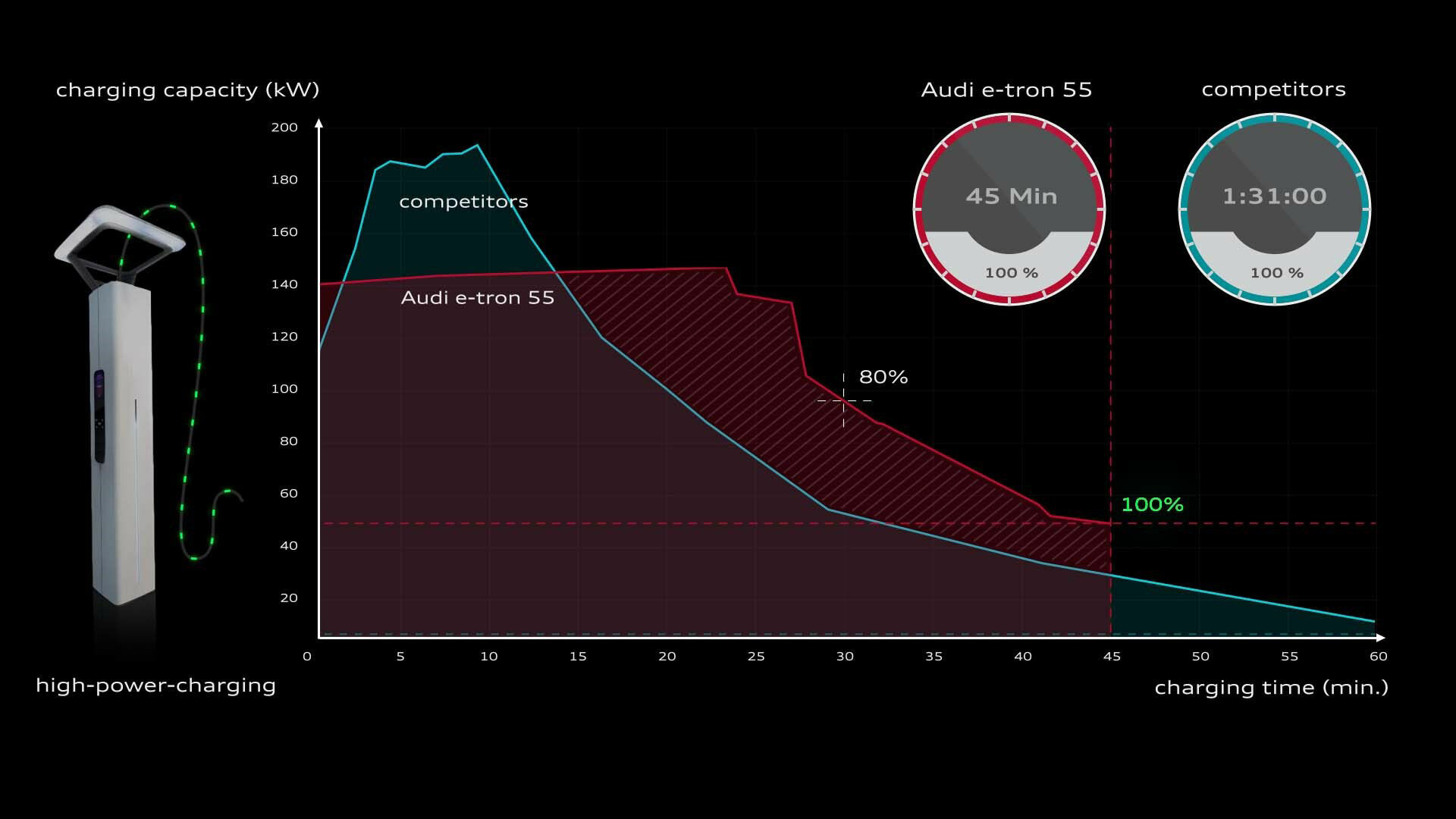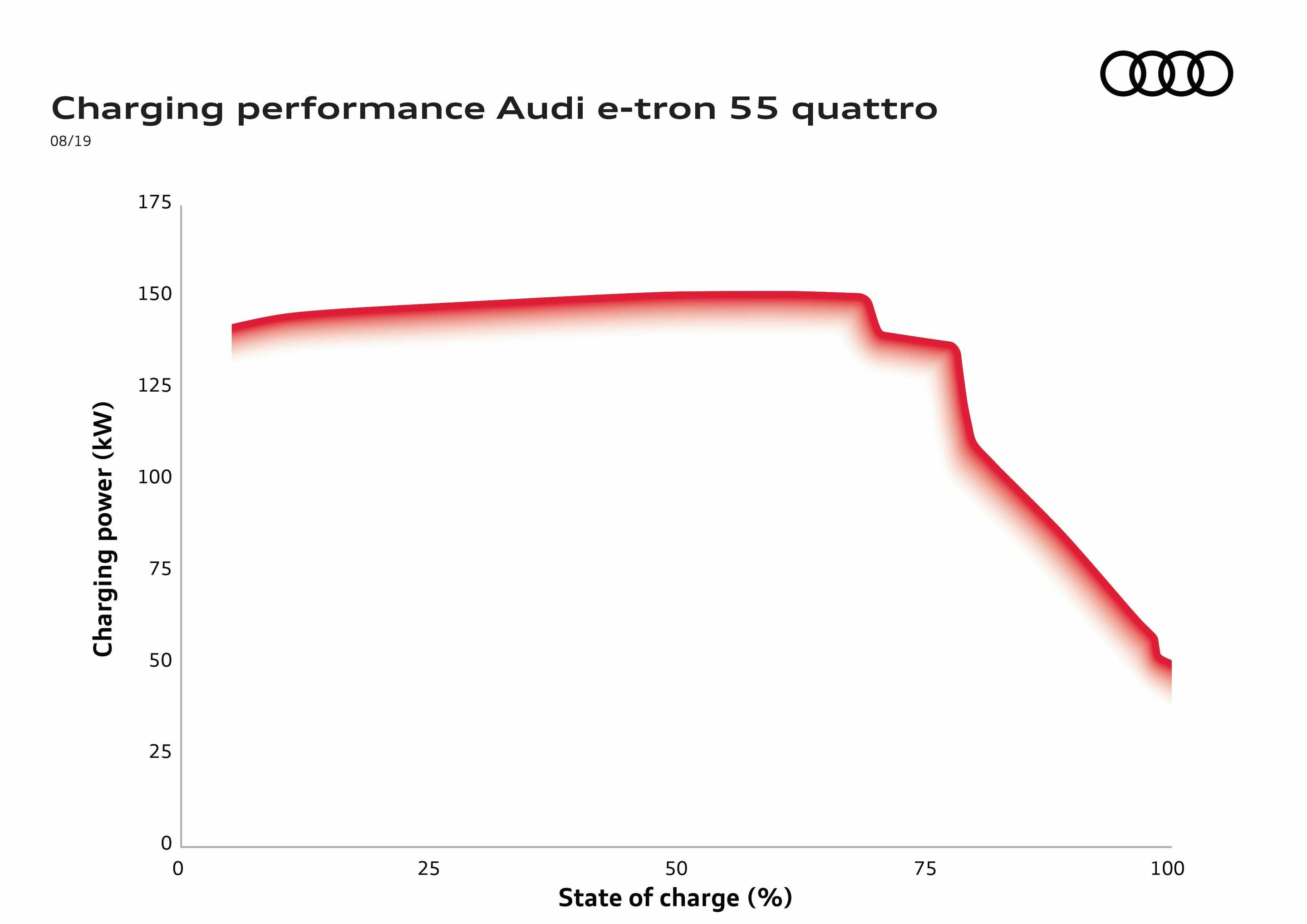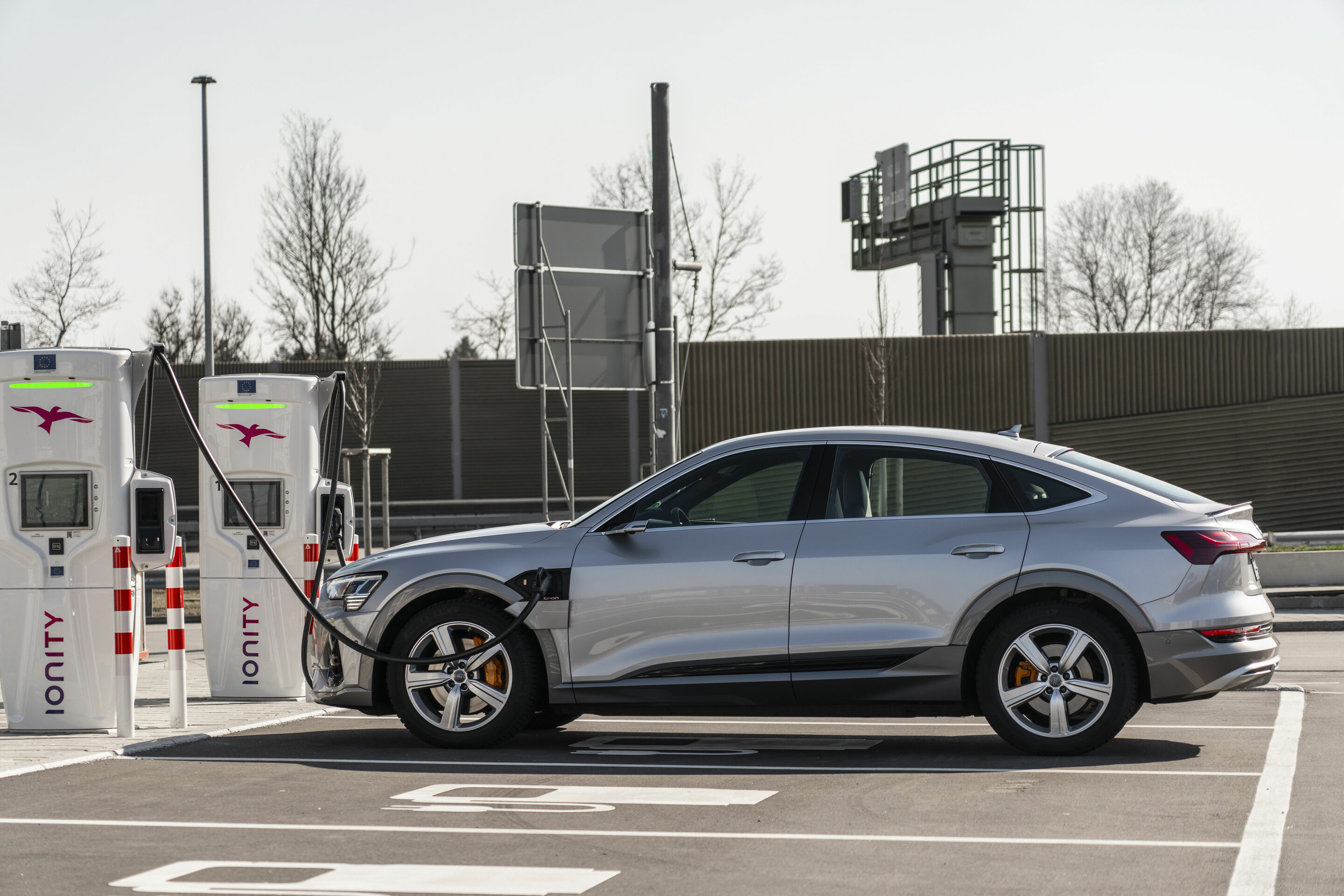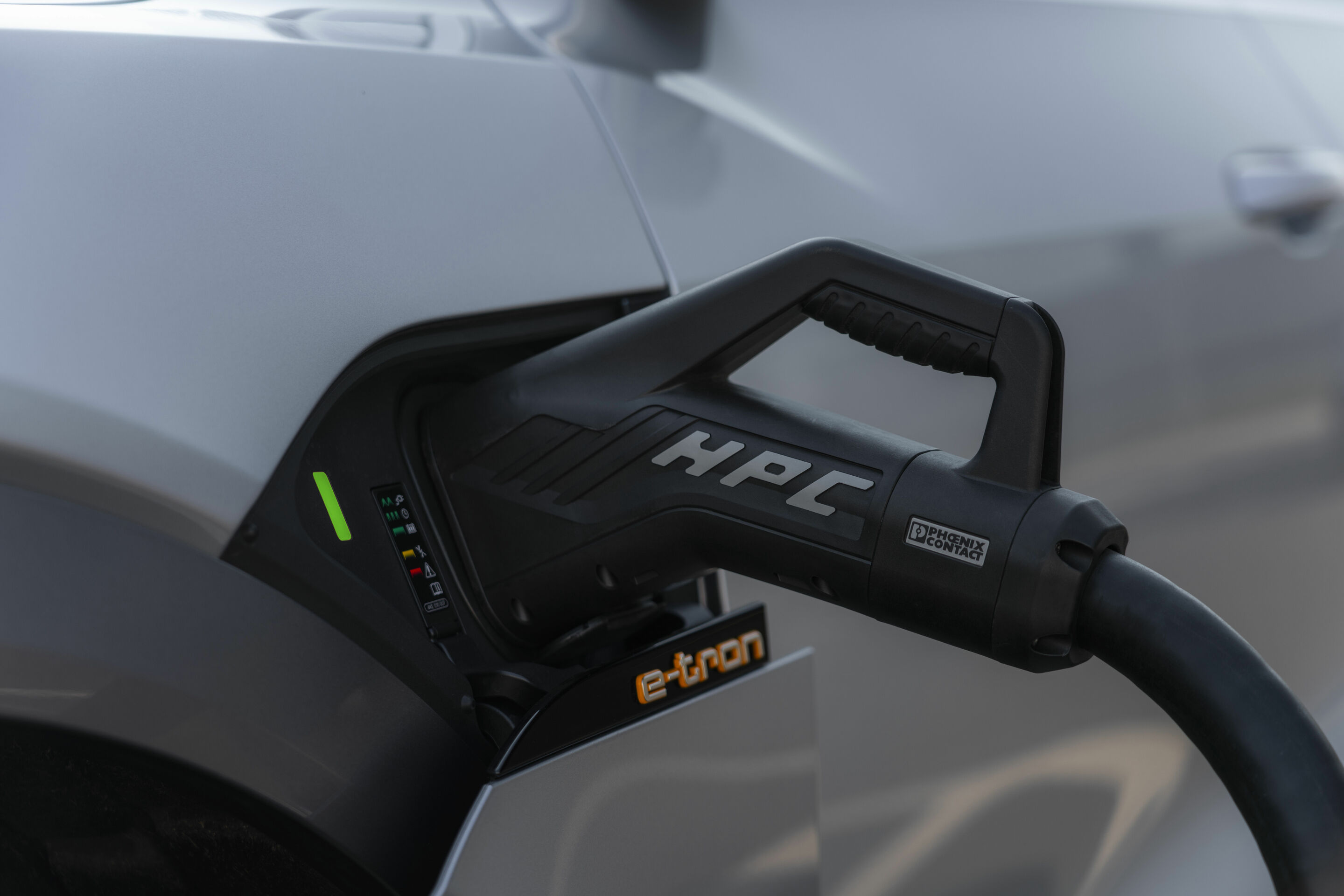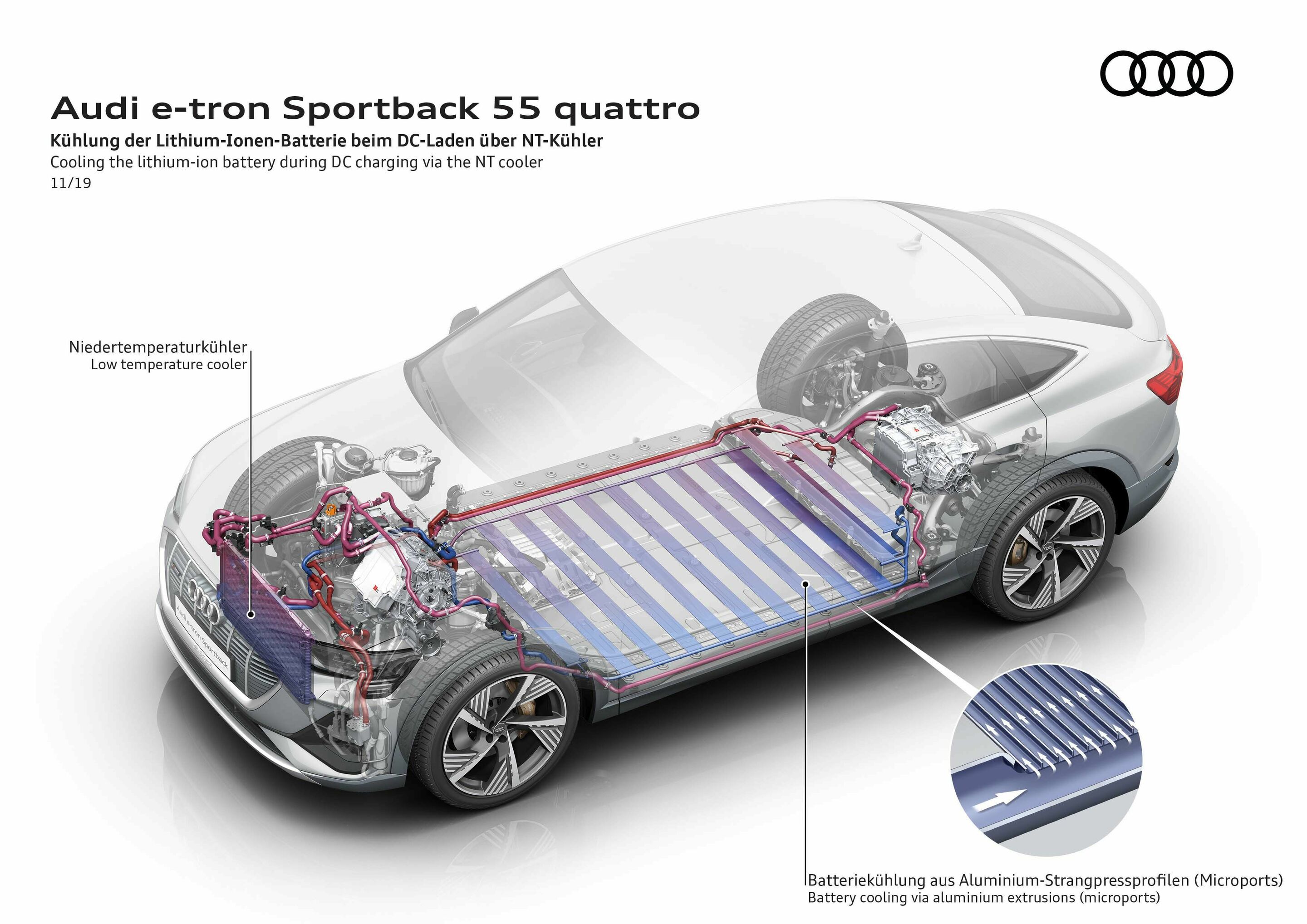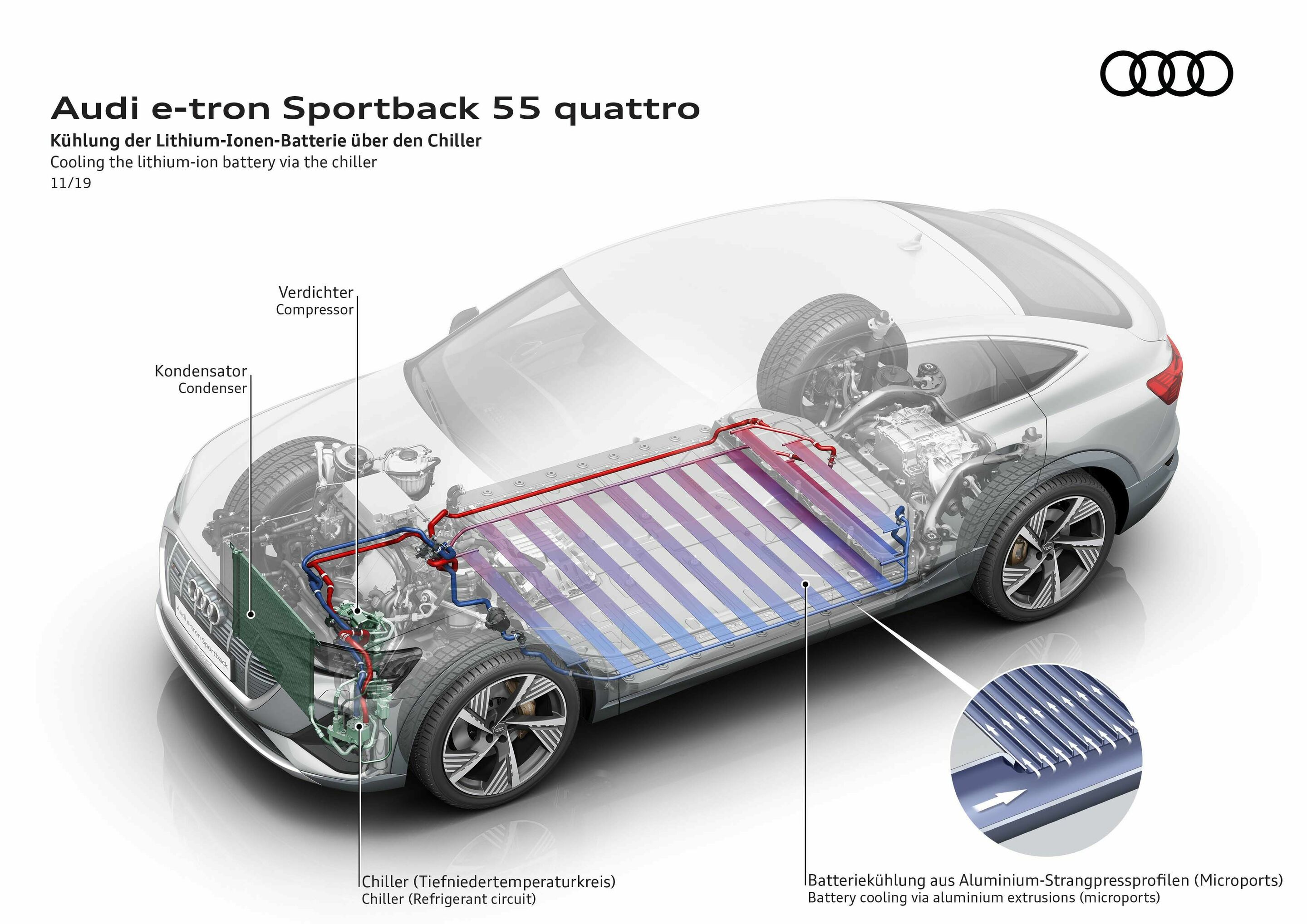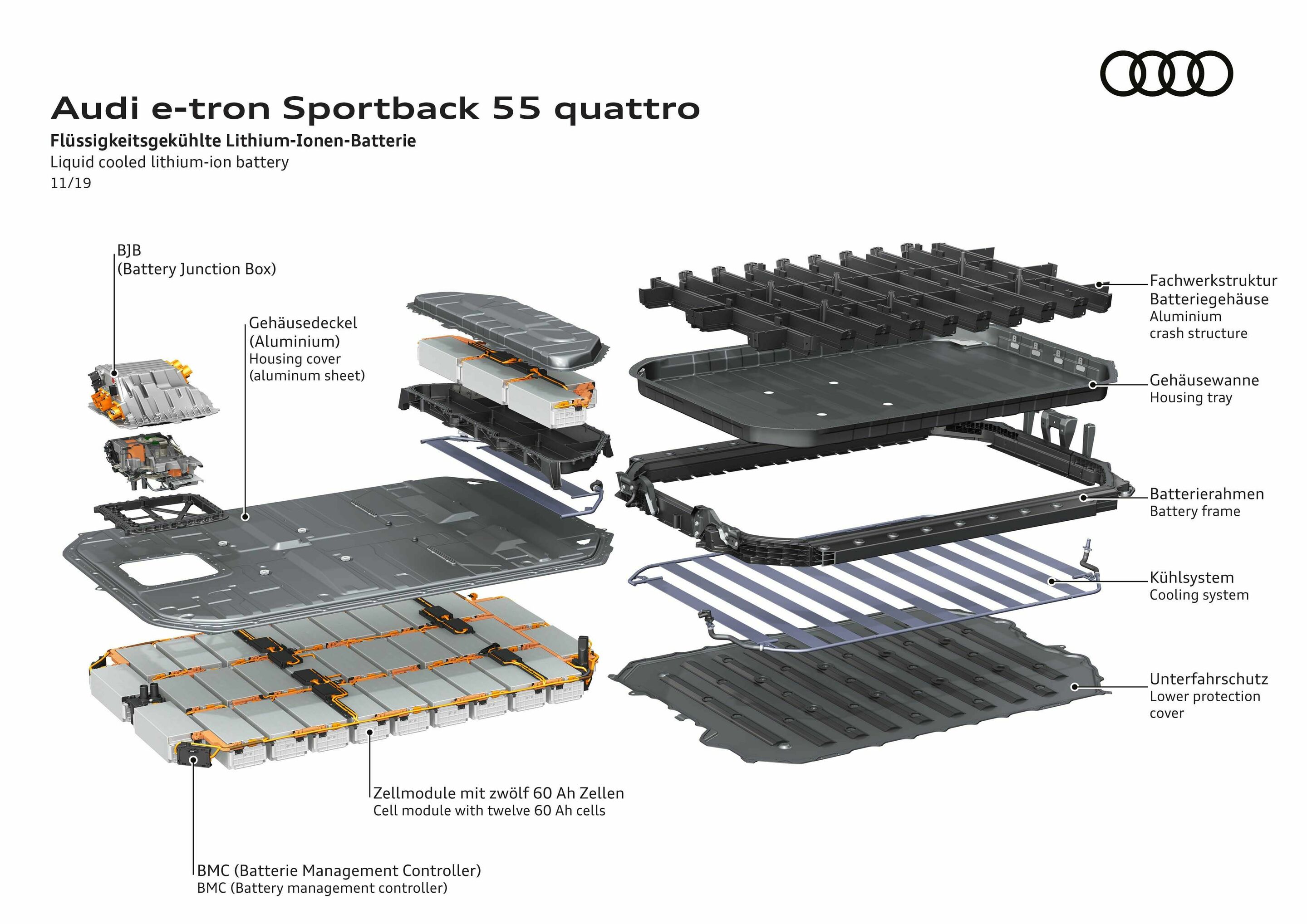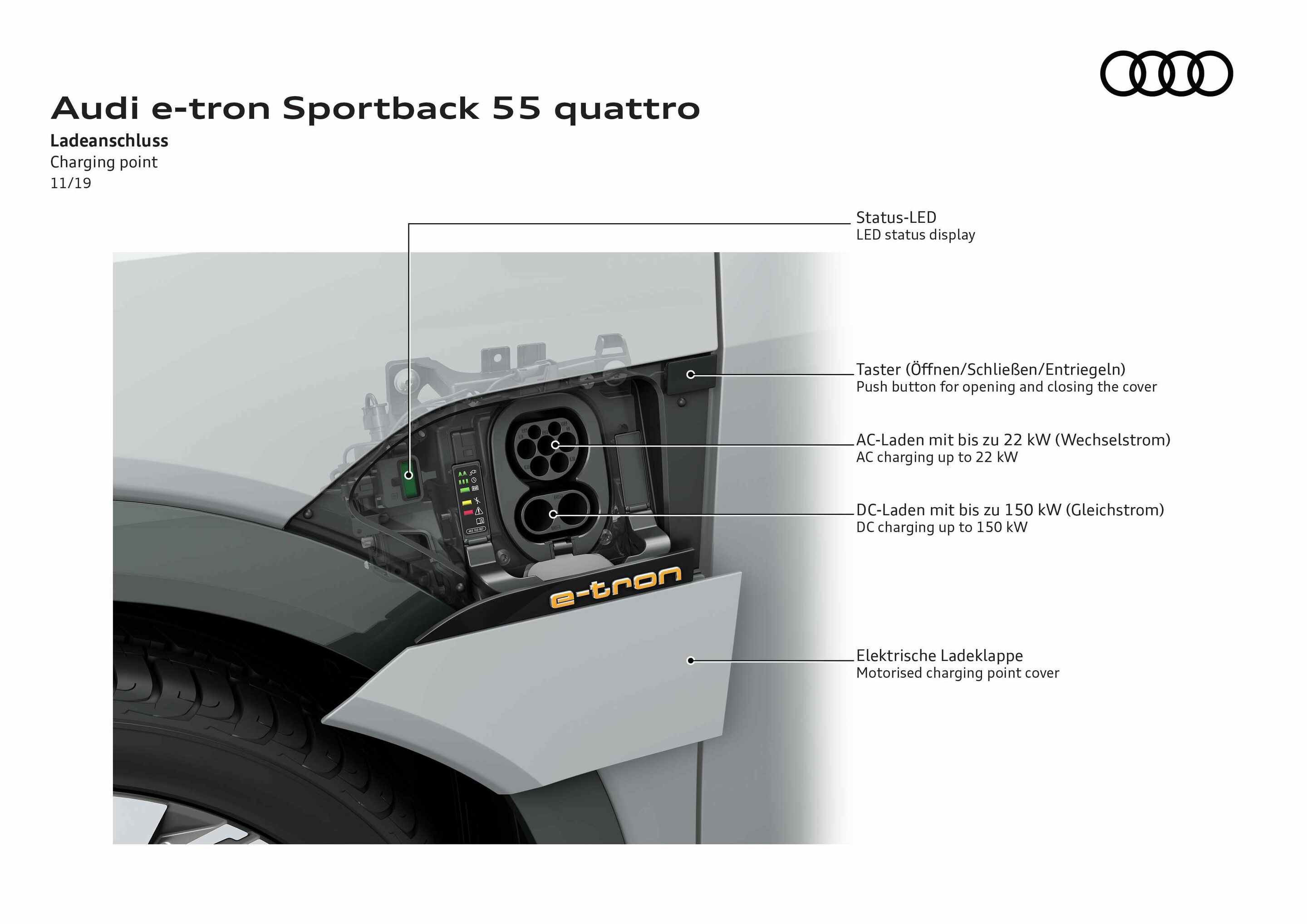Audi e-tron models with high charging performance
- The Audi e-tron 55** charges with maximum charging capacity of up to 150 kW over a large portion of the charging procedure
- The real charging duration depends largely on the ideal charging curve
- Unique charging curve: short charging duration even beyond 80%
- The Audi e-tron** is fully charged at a fast charging terminal in around 45 minutes
The charging process is central to the everyday usability of an electric car. The shorter the stop required for charging the higher the customer’s satisfaction. Drivers of a fully electric Audi model thus benefit from high charging speeds because the charging capacity of up to 150 kW is available for a large portion of the charging procedure. This enables sophisticated thermal management of the lithium-ion battery. In order to assess the everyday usability of an electric car, customers should take not just the nominal maximum charging capacity but also the charging speed into account.
** The collective fuel consumption values of all models named and available on the German market can be found in the list provided at the end of this MediaInfo.
Most charging processes of an electric car generally occur at home or at work. The time factor generally does not play a substantial role there. By contrast, every minute counts and fast charging is essential on a long-distance journey. After a brief break, the car should be ready for the next stage again. Therefore, many customers orient themselves toward the maximum charging capacity of their electric car to assess the charging characteristics – but this value is of only limited use if it concerns quick refueling of range at a fast charging terminal. High charging speed (kWh/minute recharged) over the entire charging process is essential for a short charging duration. In other words, a high charging capacity must be available for as long a period as possible. The e-tron** models with their continuous output impress with precisely this property.
Charging speed is more meaningful than pure charging capacity
In the current competitive environment, the Audi e-tron** takes the lead with a high-performance charging capacity even if there are already models on the market with a nominally higher output. The difference is in the details: The ability of the HPC fast charging (High Power Charging) to provide the highest possible output at the charging terminal may be a necessary prerequisite but it is not the one crucial factor.
A high current consumption on the part of the battery for a large portion of the charging procedure is, at the very least, just as important. However, if the car charges with maximum output over a relatively short period and needs to lower its power early, the charging speed is also simultaneously lowered – i.e. battery capacity recharged per unit of time. Thus, thanks to an ideal charging curve with maximum output available for a long period of time, the charging speed is the more substantial criterion when it comes to charging performance and, ultimately, it guarantees a short charging duration at the charging terminal.
It’s the charging curve that makes the difference
When it comes to the charging curve, the Audi e-tron 55** plays to its conceptual advantages: The curve of an HPC terminal with 150 kW output stands out at a high level thanks to its continuity. Under ideal conditions the car charges between 5% and 70% state of charge at the threshold of the maximum output before the intelligent battery management reduces the current. A major difference from other concepts, which normally only reach their full output for a short time – at the “peak” – and lower their power considerably before reaching the 70% threshold. On a day-to-day basis, this means an elementary advantage: For a range of around 110 kilometers, the customer ideally spends just under 10 minutes at the charging terminal. The Audi e-tron 55** reaches the 80% mark after approximately 30 minutes – both being rules of thumb for orientation in everyday circumstances with the e-tron models. Even though it takes much longer, for technical reasons, to fill the remaining 20 percent of a lithium-ion battery, fully charging (5% to 100% state of charge) at an HPC terminal takes around 45 minutes – an outstanding characteristic in the competitive environment. These technical advantages not only ensure the high suitability of the e-tron models for everyday use but also significantly enhance the reliability of planning charging stops on long-distance trips.
Thanks to sophisticated thermal management, the car charges more quickly
The lithium-ion battery of the Audi e-tron 55** has a gross capacity of 95 kWh (net 86.5 kWh) and has been designed for a long lifecycle. Its elaborate thermal management system forms the basis for well-balanced performance and durability. Liquid cooling ensures that the battery’s temperature remains in the optimum range of 25 to 35 degrees Celsius, even at high stress levels or low temperatures. 22 liters of coolant circulates in the total of 40 meters of cooling lines in the four coolant circuits. During direct-current charging with 150 kW, cold coolant takes away the heat that occurs as a result of electrical internal resistance in the battery. The core of the cooling system is made up of extruded profiles – visually comparable with a slatted frame – which have been affixed to the battery system from below. A newly developed, thermally conductive adhesive joins the cooling unit to the battery housing. The gap filler forms the contact between the housing and the cell modules placed in it. This filler is a thermally conductive gel that fills the space to the housing beneath every cell module. The gel evenly transfers the waste heat produced by the cells to the coolant via the battery housing. The spatial separation of elements and battery cells carrying cooling water also increases the overall system’s safety. An additional positive side effect of this elaborate design is the high resilience in the event of a crash.
Glossary of charging technologies
Alternating current
Alternating current (AC) comes out of the conventional Schuko sockets in the home. They deliver a constant current of 10 amperes and 16 amperes for short durations. With a voltage of 230 volts, output is limited to 2.3 or 3.6 kW, respectively. In an AC line, the electrons continuously change direction with a frequency of 50 Hz, i.e. 50 times per second. This back and forth is called the phase. 230-volt alternating current is single phase.
Three-phase current
Three-phase power is a three-phase alternating current whose phases are offset by 120 degrees. This enables a continuous flow of power and the development of strong rotating magnetic fields. Electrical utilities around the world operate their grids with three-phase current because it is easy to transform. In the home, larger consumers such as kitchen stoves are connected to the red, five-pole three-phase outlets with a voltage of 400 volts. The current is usually 16 or 32 amperes, and the corresponding output 11 or 22 kW, respectively.
Direct current
With direct current (DC), the electricity always flows from the positive pole to the negative pole without ever changing polarity. Regular and rechargeable batteries like those in a cell phone provide direct current. Electronic devices such as televisions, which may be equipped with internal converters for different voltage levels, are operated with direct current. Direct current also enables the low-loss transmission of very high power across long distances. The lithium-ion battery in the Audi e-tron also delivers direct current while discharging and requires the same when charging.
AC charging
Whether at home or at a charging station, output when charging an electric car with alternating current via the type 2 plug commonly found in Europe is generally limited to 22 kW or in some cases 43 kW. The AC charger in the car is therefore also a limiting factor. Its inverter, which converts the three-phase current into direct current for the battery, can only process a certain output, which is measured in kW. The higher this is, the more waste heat it produces, which reduces the efficiency. To keep such losses as low as possible, the three-phase charger in the Audi e-tron is integrated into the low-temperature cooling circuit.
DC charging
The AC charger in the car is irrelevant when charging with direct current. The electricity flows from the DC charger integrated into the pillar through the CCS (Combined Charging System) directly into the battery. This enables high power, although heat is also produced here due to internal resistances in the battery. Audi cools the high-voltage battery during charging to achieve charging outputs of up to 150 kW at DC fast charging stations, such as those in the Ionity network. With all lithium-ion batteries, charging speed slows dramatically above a charge level of roughly 80 percent. Fast DC charging is also referred to as high-power charging (HPC).
Fuel consumption of the models named above:
(Fuel consumption, CO2 emission figures, and efficiency classes given in ranges depend on the selected equipment of the vehicle)
Audi e-tron 50 quattro
Combined electric power consumption in kWh/100 km: 26.6–22.4 (WLTP); 24.3–21.9 (NEDC);
Combined CO2 emissions in g/km: 0
Audi e-tron 55 quattro
Combined electric power consumption in kWh/100 km: 26.4–22.4 (WLTP); 23.1–21.0 (NEDC)
Combined CO2 emissions in g/km: 0
Audi e-tron Sportback 50 quattro
Combined electric power consumption in kWh/100 km: 26.3–21.6 (WLTP); 23.9–21.4 (NEDC);
Combined CO2 emissions in g/km: 0
Audi e-tron Sportback 55 quattro
Combined electric power consumption in kWh/100 km: 26.0–21.9 (WLTP); 22.7–20.6 (NEDC);
Combined CO2 emissions in g/km: 0
